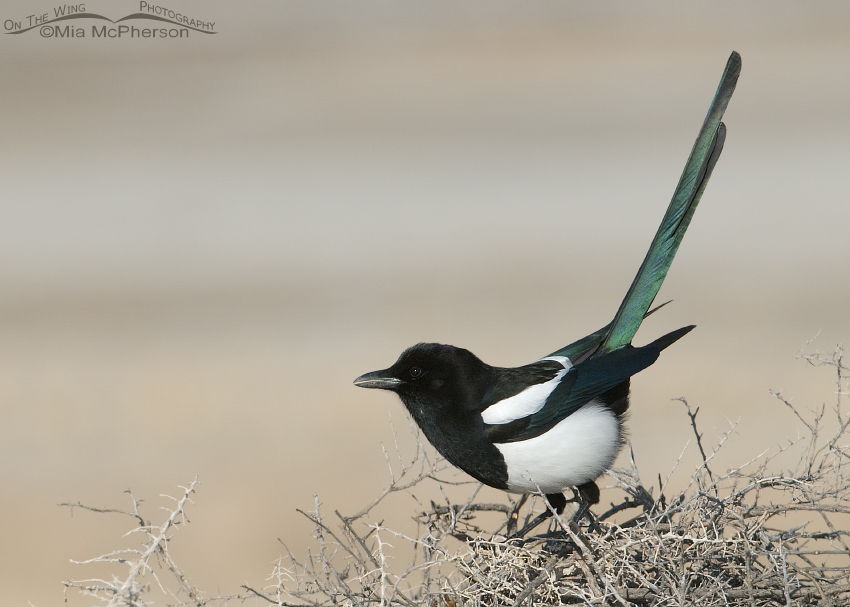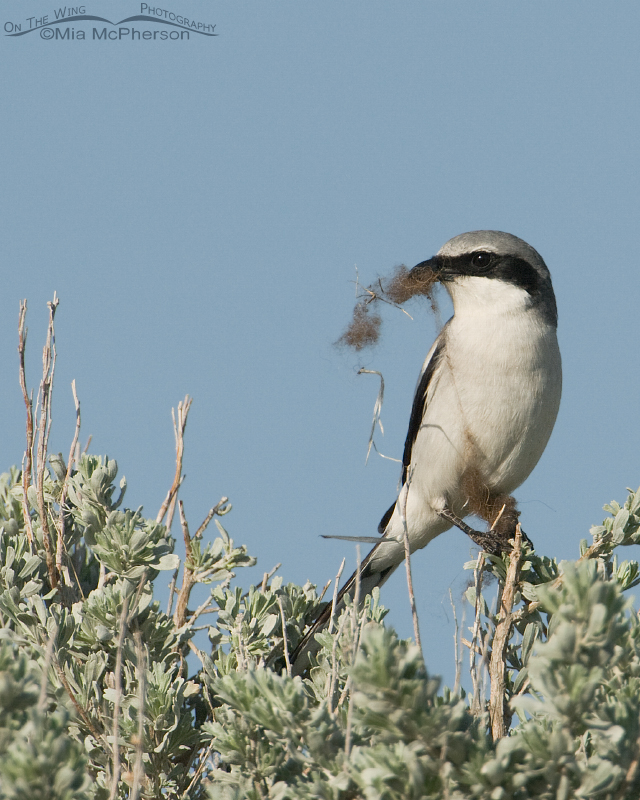 Black-billed Magpie building a nest – D200, f6.3, 1/1600, ISO 400, 200-400mm VR at 400mm, +0.3 EV, natural light
Black-billed Magpie building a nest – D200, f6.3, 1/1600, ISO 400, 200-400mm VR at 400mm, +0.3 EV, natural light
When I started to become serious about bird photography while living in Florida, I did it alone. I would walk the trails, search for birds, and look for new locations to find them.
At that point in my life, I needed the solitude. I was aware that I probably needed the time alone to learn about my camera and the strengths and limitations of my gear without other voices in the mix.
In addition, I needed time to become more knowledgeable about the behaviors, habitats, food preferences, and other aspects of the birds I wished to photograph.
There is something very peaceful and relaxing about wandering alone down a deserted beach before the sun starts to light up the sky, sitting on a sand dune waiting for the sunrise, or strolling through the Spanish moss-covered slash pines just before the sun starts to set.
Listening carefully for the sounds of the birds, the tap-tap of a woodpecker drumming on a tree, the “drink your teeee” of an Eastern Towhee or the call of a Bald Eagle overhead. I tuned in with my ears and I could locate many bird species simply by their sound.
One of the most important tools we use for locating birds is our eyes. We see a flutter, the flip of a tail, the stretch of a wing, or a bird flying through our field of vision, and then we get the camera ready.
I can detect a spotted sandpiper among other small peeps because I know they bob their bottoms up and down. I also know that a bird I see in the distance is a harrier because of the white rump and the buoyant way it flies. I’ve learned to recognize the hornet’s nest shape of a Great Horned Owl sitting in a pine, among other things.
It wasn’t until a few years after I got serious about photographing birds that I started to shoot them with other photographers. At first, I wasn’t sure about it, but over time, I saw a few benefits. And some issues.
 European Starling in Salt Lake County – D200, f7.1, 1/1000, ISO 320, 200-400mm VR with 1.4x TC at 400mm, EV +0.3, natural light
European Starling in Salt Lake County – D200, f7.1, 1/1000, ISO 320, 200-400mm VR with 1.4x TC at 400mm, EV +0.3, natural light
Four eyes instead of just two
When you have two photographers scanning the horizon for birds you increase the chances of seeing them in some, but not all cases.
Also, if the other person knows the bird’s behavior well they can detect when a bird might lift their wings, lift off or perform an interesting action and give a warning.
One photographer might have better vision and be able to spot birds that the other person may not or can’t see. Or maybe they have their eyes glued to their phones and miss seeing the birds altogether or too late.
If one of the photographers is driving while using the vehicle as a mobile blind they will need to focus more on driving while the other person focuses on locating birds.
I know on a few occasions I have been able to spot birds whose activity clued me in that the birds were actively building a nest*(see below) or on the nest that a person who was driving would not most likely see.
Things to consider if you are thinking of photographing birds with a partner are as follows:
Realize that other people may have more or less patience for sitting still and waiting for birds. People with less patience might want to leave before you are ready and as a person with mounds of patience I can positively say that can be very frustrating.
Or that they may want to take more images than you feel are necessary for a species you are not particularly interested in.
Consider the focal length the other photographer normally uses. If one person uses a 300mm lens with a 1.4x and the other is using a 500mm with a 1.4x, the person with the shorter focal length will need to get closer to the birds if they are on foot to get a frame filling image or have to take a much larger crop to get the bird larger in the frame in post processing which is known to cause loss of detail.
If the birds move in closer the photographer with the longer focal length may be too close to allow for space around the bird or it could cause them to clip important parts of the body of the subject. It is probably be best to photograph with a person using the same focal length that you do. In fact, I know it is.
 Loggerhead Shrike with nesting material – D200, f7.1, 1/2000, ISO 400, 200-400mm VR with 1.4x TC at 400mm, natural light
Loggerhead Shrike with nesting material – D200, f7.1, 1/2000, ISO 400, 200-400mm VR with 1.4x TC at 400mm, natural light
Photographing birds with another photographer can be a very rewarding and fun experience and while you are waiting for birds to show up. You’ll have the time to compare techniques and share information about the bird species that you are hoping to see.
If the other photographer is great company you will find the time a pleasure.
If not, well you have learned something and you might do a whole lot better on your own.
Life is good.
Mia
Click here to see my bird photos in their galleries.
* Ethics on photographing nesting birds:
- Do not approach too closely
- If the birds show any sign of distress, back away
- Don’t trim leaves, twigs or branches to get a clearer shot, you may inadvertently attract predators or cause the eggs/chicks to over heat
- Follow local, state and federal guidelines concerning nesting birds
- Don’t harass the birds to get an action shot


Thanks